Courtesy: Jukka Shemeikka, Head of Aquatics at the Olympic Training Center Rovaniemi, Finland.
As a part of its Research, Development and Innovation (RDI), the Olympic Training Center Rovaniemi is running a competitive swimming development program called ‘Modern Dryland Training’. This arose from the simple objective of creating better solutions for dryland training for swimmers and coaches globally. Along the way, the focus has shifted to a bigger picture of having synergy between dryland training and pool training.
This article continues the theme of myofascial connections in swimming. The first article was about the Posterior Oblique Sling, which was published in three parts. The article series is accessible on the Swim Swam site (Part 1, Part 2 and Part 3).
The muscles in the shoulder and arm are arranged in patterns running both deep and close to the bones and closer to the skin. This enables them to act as a stabilizing chains helping to control movement. This is so important for swimming, especially in the long axis strokes where injury rate is high. If these muscle-chains are not trained properly, it can not only cause injury but also lower the performance of the swimmer.
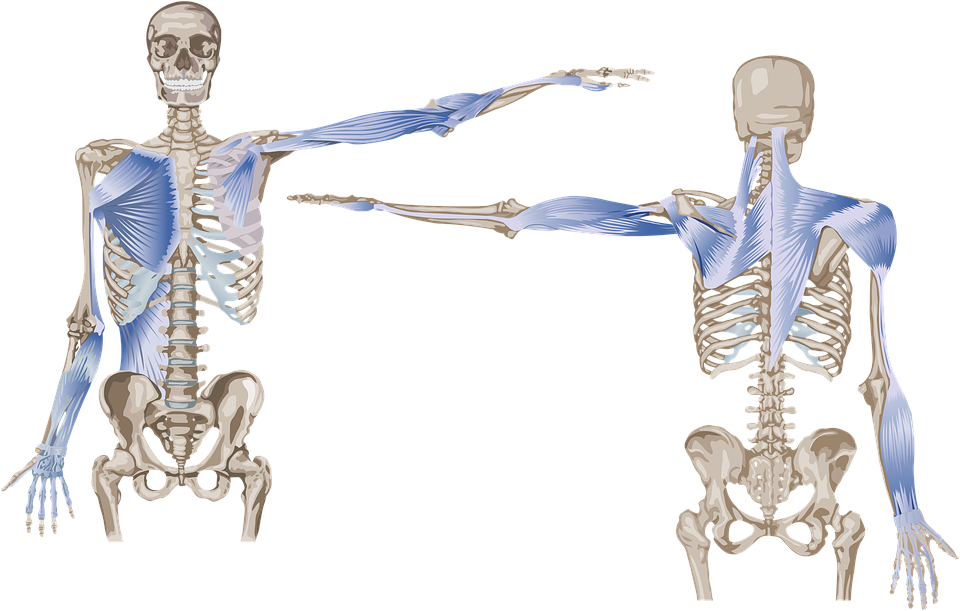
This is the arrangement of muscles in the trunk, shoulder and arm. Tom Myers described these as ‘Arm lines’. The picture is showing the Superficial and Deep lines on both the front and back of the body.
TOO MUCH TOO EARLY?
The internet offers access to much information nowadays. Unfortunately, the free access information is often fragmented, making it difficult to understand the bigger picture. Using separate exercises from YouTube might put the athlete in a situation, where the exercise is too advanced, and the athlete is unable to get the full benefit from it. Before training the myofascial connections, there are number of things the athlete has to learn to master first. Unfortunately, there isn’t a shortcut, but with careful planning, the athlete can learn the necessary features needed for continuous development.
In our Dryland training curriculum at OTC Rovaniemi, the training of myofascial connections form a structured passage to the pool training. In this way, we make sure the athlete fully benefits from his dryland training when he gets to the pool, but also that he understands the role of every feature trained for his swimming.
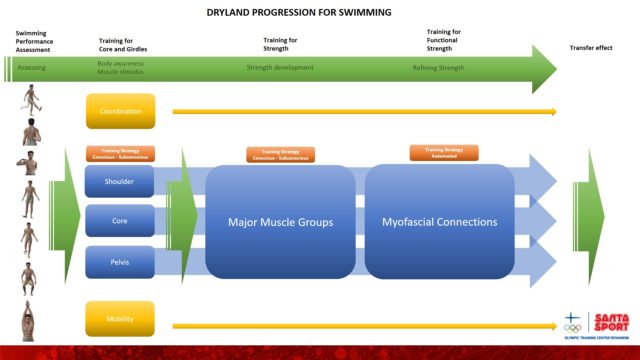
Olympic Training Center Rovaniemi Dryland Training Curriculum
KNOW YOUR ATHLETES
Before advancing to training, we do an assessment of the athlete. To plan a progressive training program you must first understand who the athlete is. For this purpose, we use the level 1 Swimming Performance Assessment (SPA) developed by the Swimming Performance Institute. This gives us information on the athlete’s skill level and allows us to track the progression over time. Assessing and monitoring the athletes is important, so we can adjust their training program according to their capabilities. It also lets us understand what we can expect from them in the water. In this way, we can focus on what’s important in dryland training at that moment. It also protects the athlete from training-based injuries, because it ensures the athlete is working at the right level of difficultly.
CORE AND GIRDLES
The Core and Girdles are real gatekeepers for utilizing strength in the water. We have noticed there are a lot of discussion and research on this topic from an injury prevention perspective. We already realize that understanding the role of Core and Girdles in dryland training will help develop the athletic parameters as planned. However, the physical requirements we should strive for in these areas are still largely unknown. What should be the strength level of muscles moving the scapula, or the hips? How much power should the Core be able to transfer?
With our RDI work, we aim to further study the requirements of Core and Girdles from a race performance perspective, as we believe this will add important information for coaches.
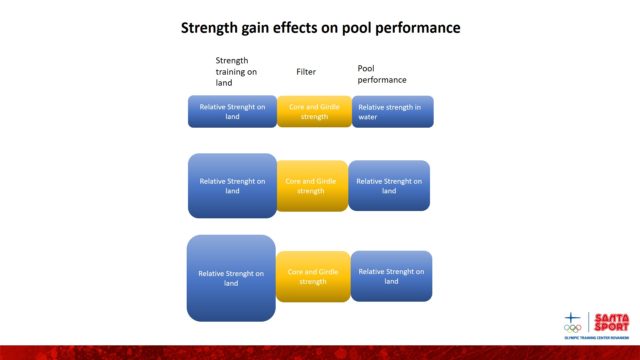
Hypothesis on Strength gain effects on pool performance.
The hypothesis on strength gain is that the relative strength in the water is equal to Core and Girdle Strength gains. This is a something every swimmer faces at some point of their career. It is the point where relative strength gains in major muscle groups don’t bring any additional value to pool performance in the free swim part of the race. To develop the Core and Girdles to their full capacity, one must understand how they function.
Assessing the athlete helps us to understand their current skill level. As we performed these assessments, we discovered that many athletes fail in low-level exercises, but still they work daily on high-level skills in dryland training hoping to make progress. This raises the suspicion, that they are not carrying the full benefit of dryland training into the pool.
A great way to assess the understanding of core control is the level 1 SPA breathing test. If the athlete passes the test, he has the ability to advance to next level and being able to use his core more effectively in his training.
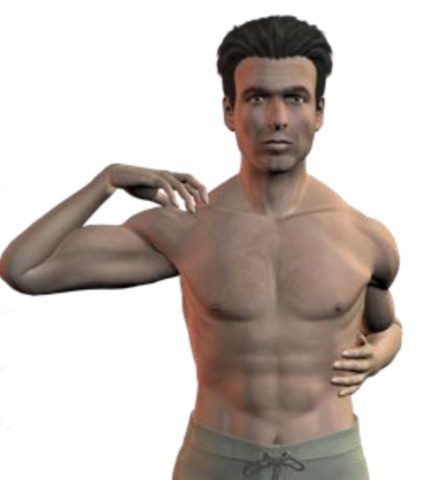
The assessment is for the diaphragm, which is the main breathing muscle and essential for good core stability.
In the assessment, the athlete puts one hand on top of the shoulder and one on the side of the ribcage. The Instruction is to take a deep breath, while the coach observes if the ‘ribcage-hand’ moves outwards – or the ‘shoulder-hand’ moves upwards. The former is the desired result, whereas the latter (the hand on the shoulder raises up) is suggestive of poor use of the diaphragm. The assessment should be performed on both sides.
A full description of this and similar assessments can be found, free of charge, on the Swimming Performance Institute’s website.
TRAINING FOR ARMLINES
Training of the muscles in the shoulder and arms (arm lines) only becomes relevant when the athlete has progressed beyond this stage. This ensures he/she does not suffer injury in training, and the difficulty and intensity level can be added accordingly. Working on arm lines is all about improving the timing and the use of the myofascial connections to help develop swimming performance. The benefit from this will most clearly be seen in the long axis strokes.
To be able to control different arm line exercises, the athlete needs these qualities:
• Control and strength of the Core
• Control and strength of the shoulder girdle
• Control and strength of the pelvic girdle
• Upper body strength
Here’s an example of front arm line training: The exercise is called butterfly push-up. The exercise can be done at various levels of intensity. It is one of the final step exercises that offers a great support for swimming at high intensity.
Disclaimer: As with all exercise programs, when using our exercise videos, you need to use common sense. To reduce and avoid injury, you will want to check with strength and conditioning or medical professional before beginning any fitness program. By performing any exercises, you are performing them at your own risk. Olympic Training Center Rovaniemi and any party publishing the article will not be responsible or liable for any injury or harm you sustain as a result of exercises presented in our articles. This includes videos and text.

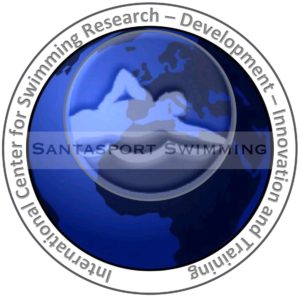
Olympic Training Center Rovaniemi is one of the six Olympic Training Center’s in Finland. Together with a diverse network of Universities, sports federations and associations, research institutes and other experts, we are able to offer a wide level of education in multiple fields of sports and well-being as well as in different sports.
Santasport Swimming is a growing International development and research program for swimming. Our goal is that in the next four years we will run research on both learn to swim and high- performance swimming using our previous experience and soon to be built new aquatic center. Thru our research work, we are hoping to offer new insights on swimming development.
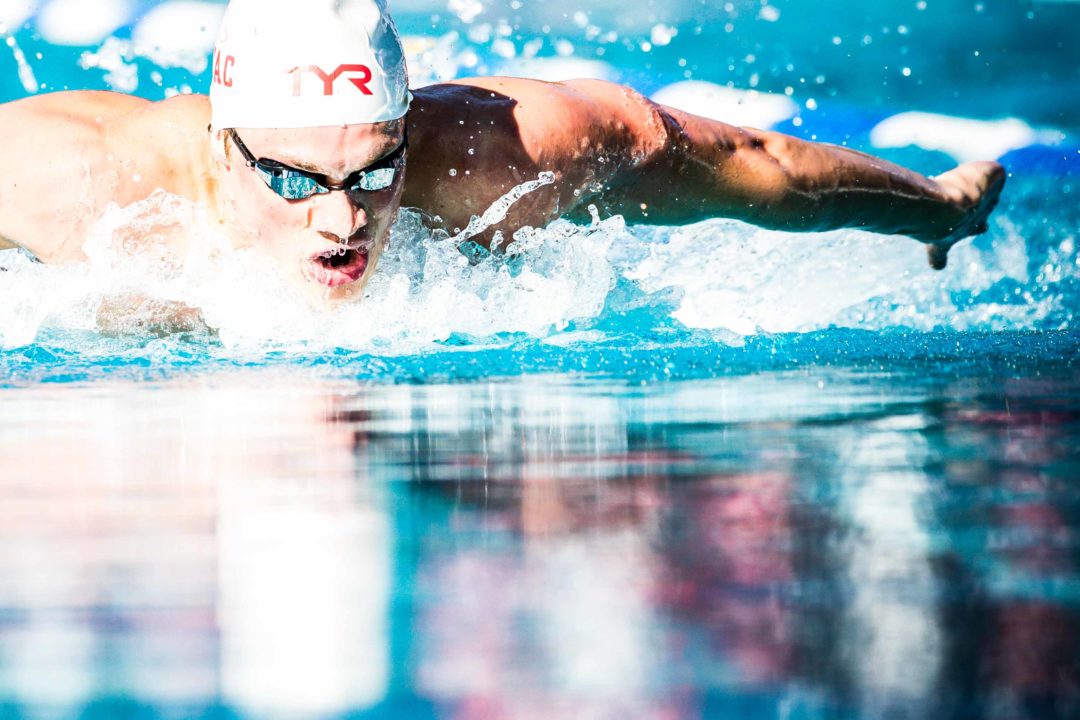
Fred Bousquet proved this to be a scam. The meat cleaver/hook is the best form of freestyle stroke. That’s why he’s the best sprinter in history.
For sprinting maybe